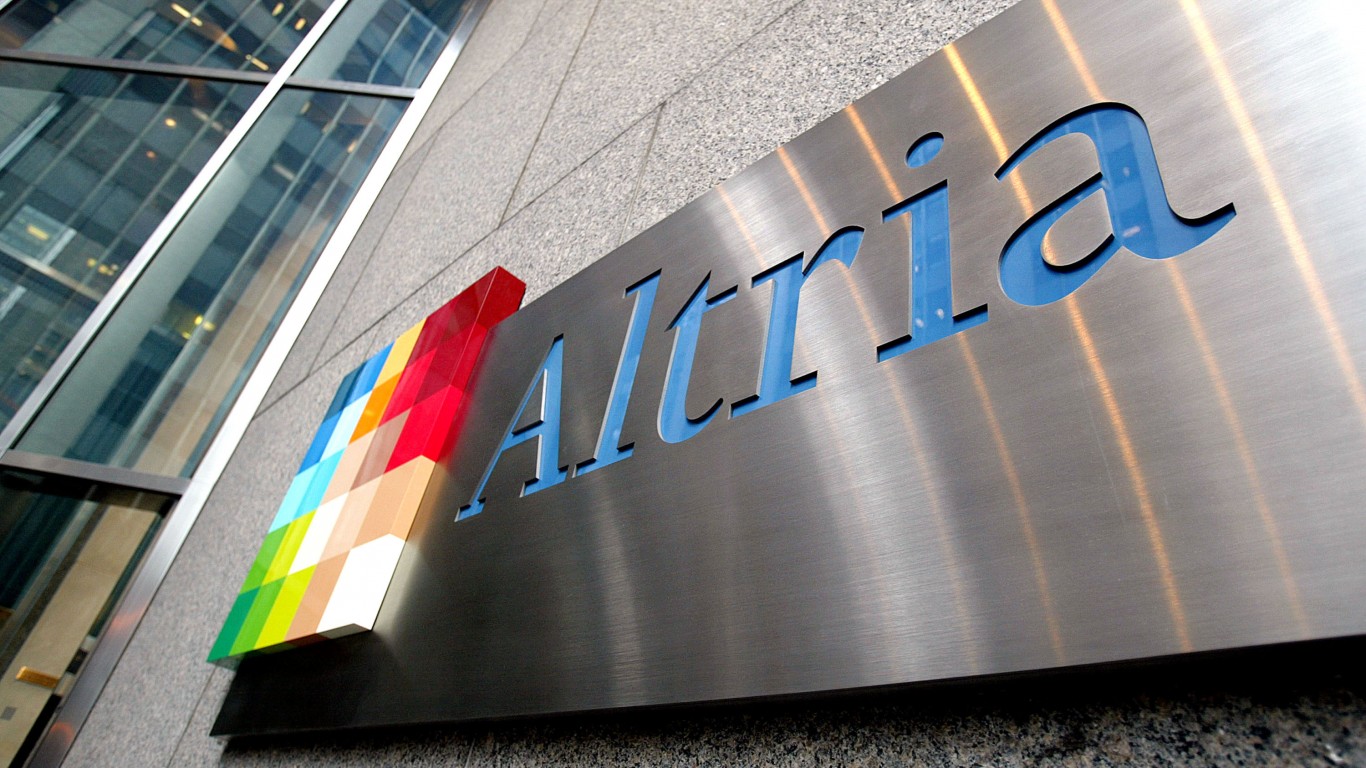
A key component of income investing is a portfolio that includes safe dividends, those that are unlikely to shrink or disappear. Recognizing when a dividend is stable and safe can be a challenge. Yet, certain metrics can offer clear signs for the investor looking to establish or shore up such a portfolio. What do these metrics tell us about the quarterly dividend at Altria Group Inc. (NYSE: MO)?
Altria’s most recent payout was $0.98 a share, and the yield is now about 9.5%. The next ex-dividend date is expected in March. The current yield is about the same as that of competitor British American Tobacco PLC (NYSE: BTI) and better than those of Philip Morris International Inc. (NYSE: PM), Universal Corp. (NYSE: UVV) and Vector Group Ltd. (NYSE: VGR). It is also greater than the industry average of more than 6%.
Dividend Aristocrat?

Other Valuation Metrics

The dividend payout ratio indicates how much of a company’s earnings are paid out as a dividend. It is a sign of how safe a company’s dividend is and how much room it has for future growth. The higher the ratio, the greater the risk. Income investors often look for a dividend payout ratio of less than 60%. Altria misses that mark with a current dividend payout ratio of more than 76%. Note that the ratio has been between 70% and 80% since the end of 2021, and before that was much higher. Also note that the industry average is high as well, at around 74%.
A look at free cash flow reveals whether the company has the funds required for its payout, as well as for share repurchases or even paying down debt or making acquisitions. Altria’s free cash flow has been fairly stable but not growing in the past few years, ranging from around $7.6 billion to $8.2 billion. Back in 2010, it was only about $2.6 billion. Income investors prefer growing free cash flows and, looked at over the long term, that is the case at Altria.
Return on invested capital is a measure of how well a company allocates its capital to profitable projects or investments. Again, the thing to look for is stability, specifically a double-digit ROIC over many years. Altria’s current ROIC is about 29%. However, the figure has swung from more than 75% to −3% or so since 2016. The trend has been upward in the past two years.
Operating margin is a measure of the percentage of revenue a company keeps as operating profit. Here too the preference is for a stable double-digit percentage increase. And here Altria delivers what income investors like to see. From around 22% in 2010, the operating margin has marched higher to about 47% or so. At rival Philip Morris, the operating margin has slowly drifted lower since 2017.
A look at sales growth offers a clue to the volatility or cyclical nature of the business. Steady, moderate growth, say 3% to 7%, is ideal. While Altria’s revenue mostly grew from 2011 to 2021, it has declined since then, from about $26.1 billion to around $24.0 billion. In comparison, revenue at Philip Morris has trended higher since 2016, though it was much higher before that.
A company’s net debt-to-capital ratio also can signal whether a dividend may be at risk. Because too much debt can put dividends at risk in hard times, a lower ratio is considered better. A debt-to-capital ratio above 0.6 usually means that a business has significantly more debt than equity. Altria’s ratio was near 1.2 on last look, up from about 0.45 in 2018. The company’s long-term debt more than doubled when it took a stake in Juul Labs in 2019.
Probably the most popular valuation metric is the price-to-earnings (PE) ratio. This indicates whether a stock is expensive or cheap at its current market price, compared to the broader market or to competitors. Altria has a trailing PE ratio near 8.3 and a forward PE of about 8.2. The PE has decreased over the past few quarters from about 14. It also compares with a historical benchmark of 15, as well as the broader market’s current 24 or so. The competitors mentioned above have higher PE ratios than Altria, except for British American Tobacco.
And finally, the number of shares outstanding is worth a look. When companies buy back their shares, that number shrinks. But secondary offerings of stock increase that number. Investors tend to prefer a declining total, as that increases their stake over time. At Altria, the number of outstanding shares has declined from almost 2.1 billion in 2010 to around 1.8 billion. The company expected to complete a $1 billion share repurchase plan by the end of 2023, trimming the shares outstanding by up to 22 million. (Why the six highest-yielding Warren Buffett stocks are perfect 2024 investments.)
Summary

| Dividend Aristocrat | ✔ |
| Dividend payout ratio | 🗙 |
| Free cash flow | ✔ |
| Return on invested capital | 🗙 |
| Operating margin | ✔ |
| Sales growth | 🗙 |
| Net-debt-to capital ratio | ✔ |
| PE ratio | ✔ |
| Shares outstanding | ✔ |
The payout ratio is higher than investors often prefer but not far from the industry average. The company needs to get its revenue and free cash flow growing again to make sure it supports the dividend. If Altria can get and keep its ducks in a row, it likely will continue to provide investors with generous dividends and share buybacks for the foreseeable future.
Get Ready To Retire (Sponsored)
Start by taking a quick retirement quiz from SmartAsset that will match you with up to 3 financial advisors that serve your area and beyond in 5 minutes, or less.
Each advisor has been vetted by SmartAsset and is held to a fiduciary standard to act in your best interests.
Here’s how it works:
1. Answer SmartAsset advisor match quiz
2. Review your pre-screened matches at your leisure. Check out the advisors’ profiles.
3. Speak with advisors at no cost to you. Have an introductory call on the phone or introduction in person and choose whom to work with in the future
Get started right here.
Thank you for reading! Have some feedback for us?
Contact the 24/7 Wall St. editorial team.



